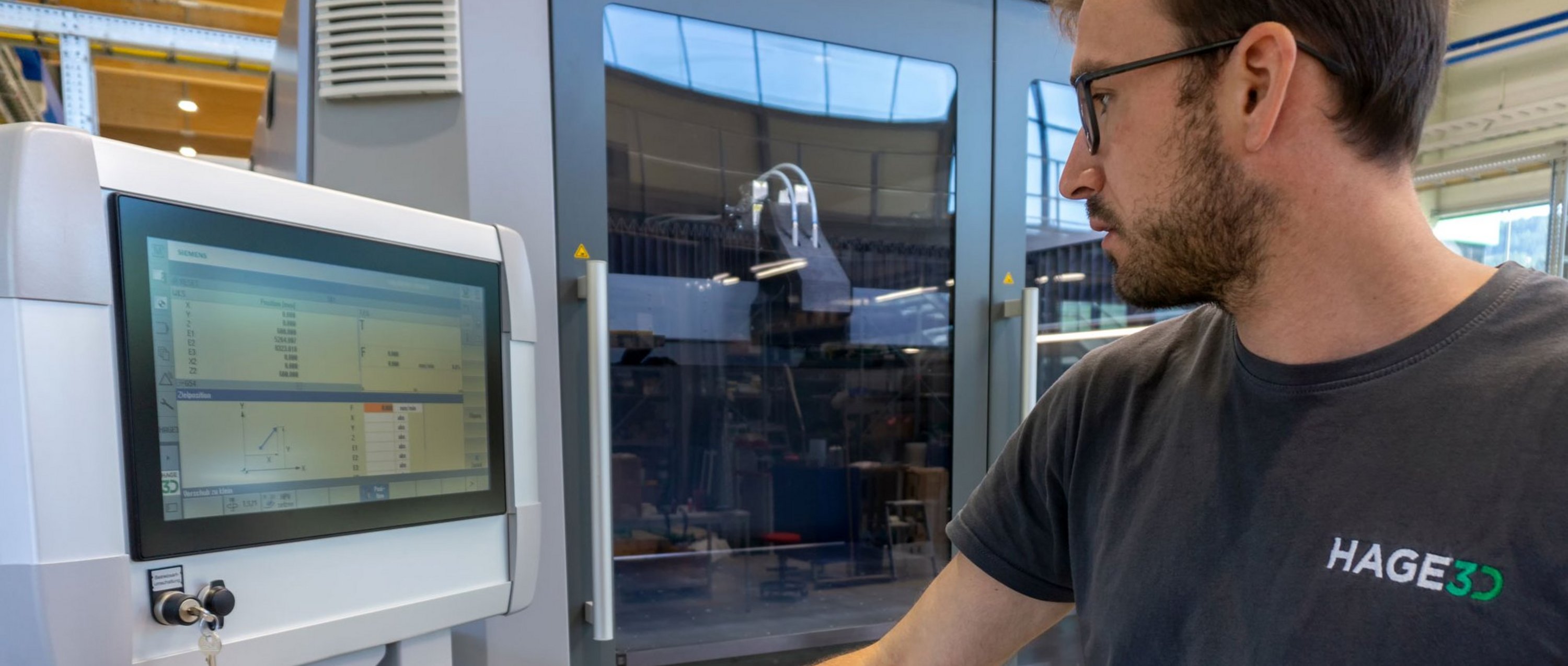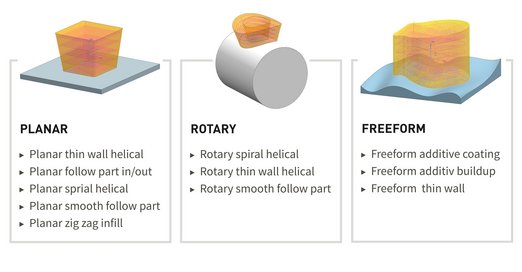SLICING SOFTWARE
AND CONTROL
Professional solutions for professional industrial 3D printers
When it comes to controlling our industrial 3D printers, we don’t want to leave anything to chance. In support of this, we have been using industrial solutions from Sigmatek and Siemens for many years. The 72L, 84L, 140L and 175C machines use controls from Sigmatek. The 5-axis-3D-printer use Siemens Sinumerik.
The situation is similar with slicing software: we use the tried-and-tested industrial solution Simplify3D for our series models (72L - 175C) and Siemens NX for the 5-axis-3d-printer.
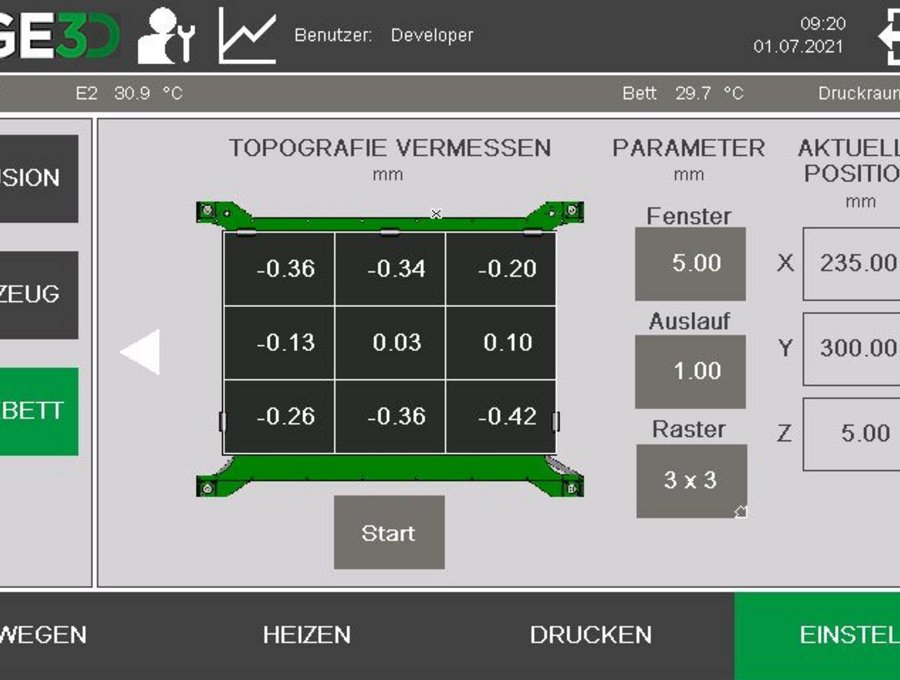
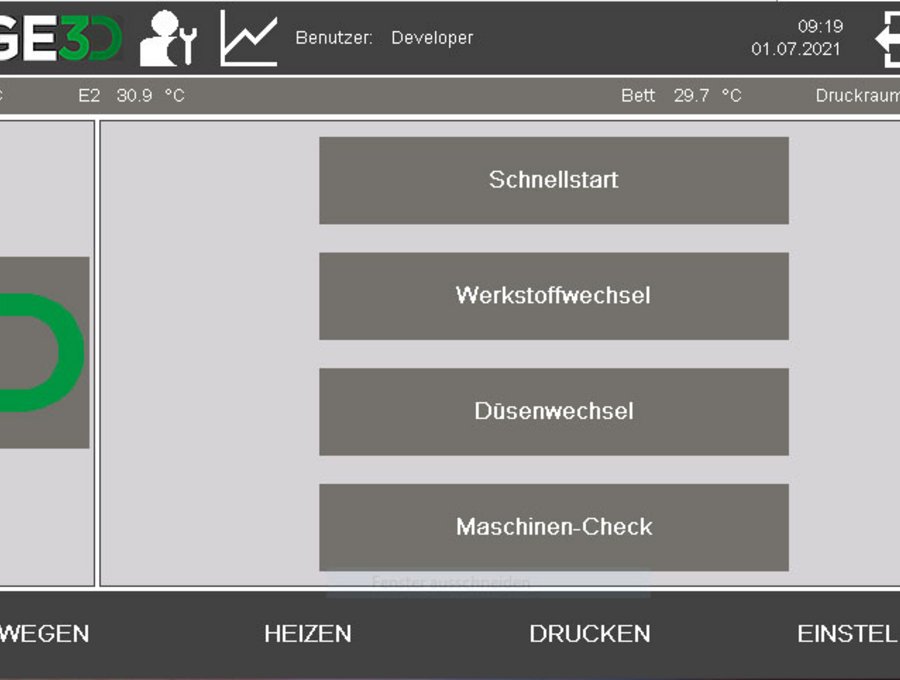
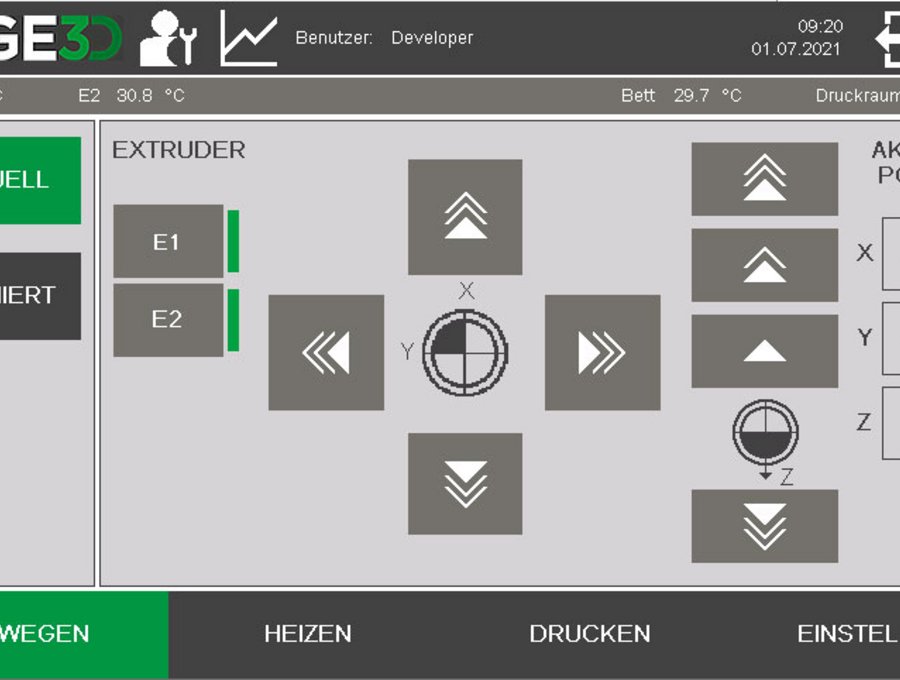
HAGE3D INDUSTRIAL CONTROL
We have worked with Austrian control system manufacturer Sigmatek to develop our own control system, which is used on the 72L, 84L, 140L and 175C industrial 3D printers. Users particularly value the logical operation offered by these controls, which greatly simplifies the printing process.
The tried-and-tested CNC interpreter of Sigmatek’s proprietary, object-oriented development and operating system LASAL converts the G-code into control commands. HAGE3D machines have nine or twelve dynamic axes, which are driven by stepper motors. The large build chambers and high resolution of our 3D printers give rise to large G-code files, depending on the component. The G-code interpreter can process large numbers of files sequentially. The solution also offers the option of comprehensive extensions and enhancements. These include a theoretically unlimited number of print heads used simultaneously, and the integration of thermographic cameras.
Key functions for your operating and maintenance convenience:
- Advance calculation of printing duration
- 3D simulation on the display
- Multi-level user administration
- E-mail notification of defined system states, such as the need for a filament change
- Network integration
Key is the multi-processor architecture used, which distributes subtasks to system components. A control panel with a 7″ dual-touch TFT colour display is used, allowing essential parts of the entire automation to be executed. This has the role of relieving the control close to the machine, made possible by smart internal task distribution. As part of ‘on-the-flight’ process monitoring, the customer can adjust defined process parameters during the manufacturing process – these include the flow of material, the different temperatures being used and the distance from the nozzle to the build platform. The combination of all these components guarantees the customer the requisite process stability and accuracy.
USED WITH THE FOLLOWING MACHINES
HAGE3D 72L
HAGE3D 84L
SIEMENS SINUMERIK CONTROL
We use the Siemens SINUMERIK 840D sl industrial control on our 5-axis-3d-printer. The printer operates with five-axis kinematics. Precise mechanical engineering gives the customer maximum reliability. Other benefits: water-cooled servo motors, absolute value encoders and ball screw drives in the X, Y and Z directions.
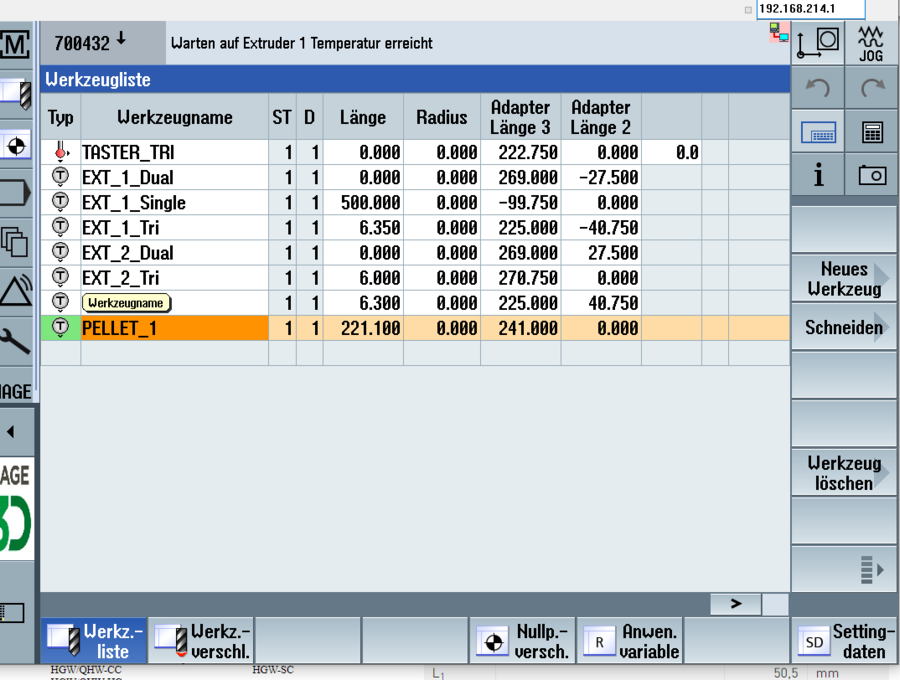
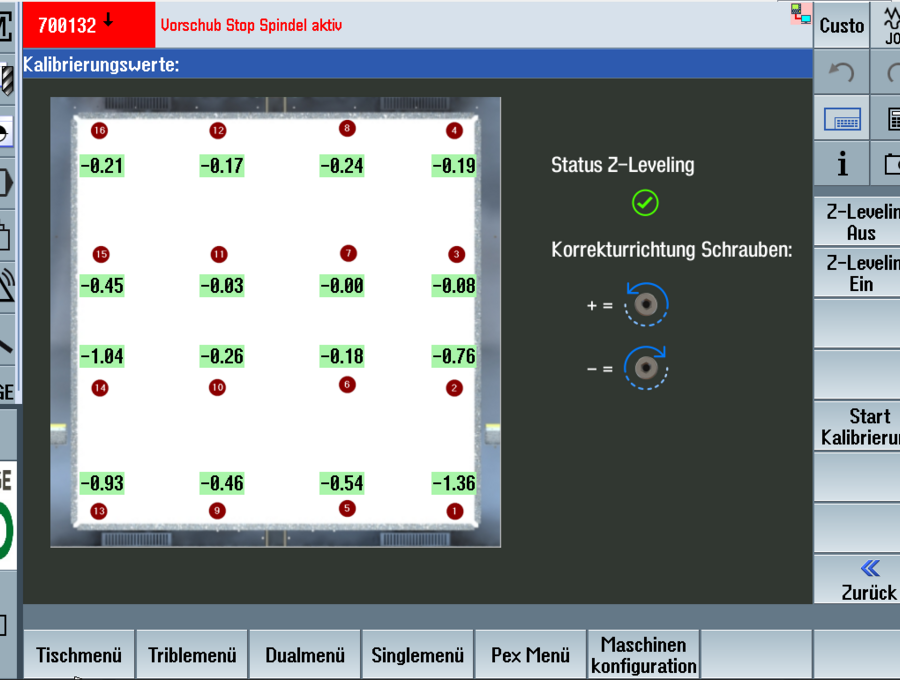
HIGHER BUILD-UP RATES, MORE EFFICIENT USE OF MATERIALS AND IMPROVED SURFACE QUALITIES
HAGE3D uses Siemens control solutions on the 5-axis-3d-printer. In conjunction with the SINAMICS S120 drive system and SIMOTICS motors, the SINUMERIK 840D sl CNC control offers accurate, multi-axis motion guidance.
The build-up strategy for additive manufacturing processes can be generated in NX using five-axis motion guidance based on the CAD model of the component. Calculation of the path for the printing process is carried out equivalently to machining processes within NX and gives rise to executable CNC programs. In a five-axis machine, there are two rotary or swivel axes in addition to the three linear directions of movement. This facilitates multi-dimensional strategies in motion guidance and relative movement of the nozzle to the construction platform. The high dynamics in conjunction with the accuracy of the SINUMERIK control enable higher build-up rates, more efficient use of materials and improved surface qualities.
MAXIMUM COMPETENCE IN A HIGH-PERFORMANCE ADDITIVE MANUFACTURING PRODUCTION SYSTEM
The system openness of the SINUMERIK 840D sl gives manufacturers the option of integrating technological functions tailored to the machine in question. The range spans from own specific user interfaces to compile-zycle, which is a unique, open architecture in the CNC core and drive. This makes the SINUMERIK 840D sl a guarantor of maximum competence in a high-performance additive manufacturing system.
In five-axis 3D printing, the requirements on slicing software are highly complex and extensive. The newly developed Multi Axis Deposition Module is based on the NX CAM solution. To program the component, the solid is firstly divided into thin layers. The software then determines the build-up strategy on a layer-by-layer basis. At first glance, the process may seem similar to a milling operation in NX CAM, but programming a material extrusion printing process differs greatly from the programming needed for a cutting tool.
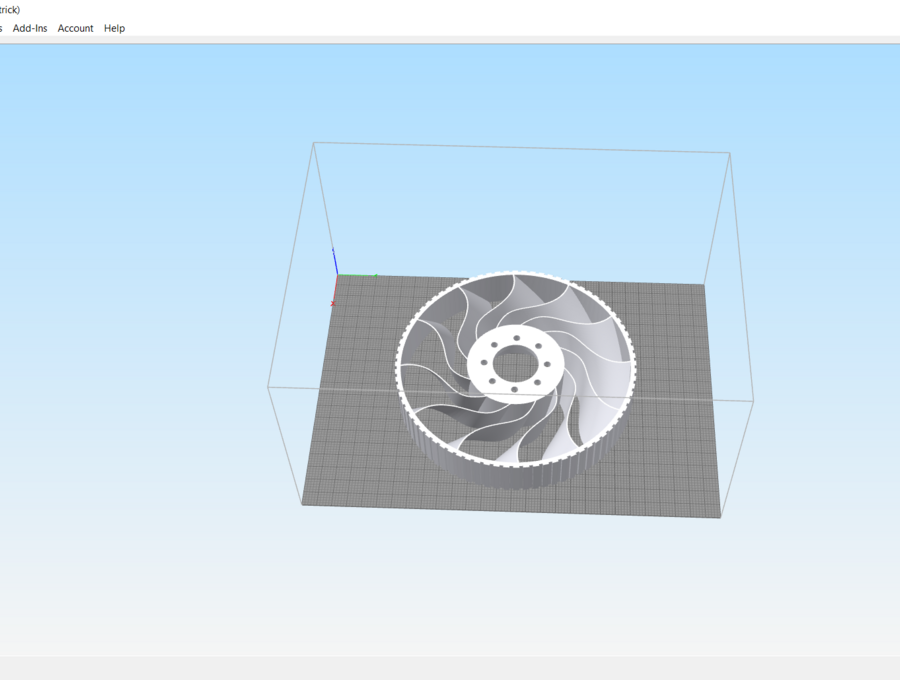
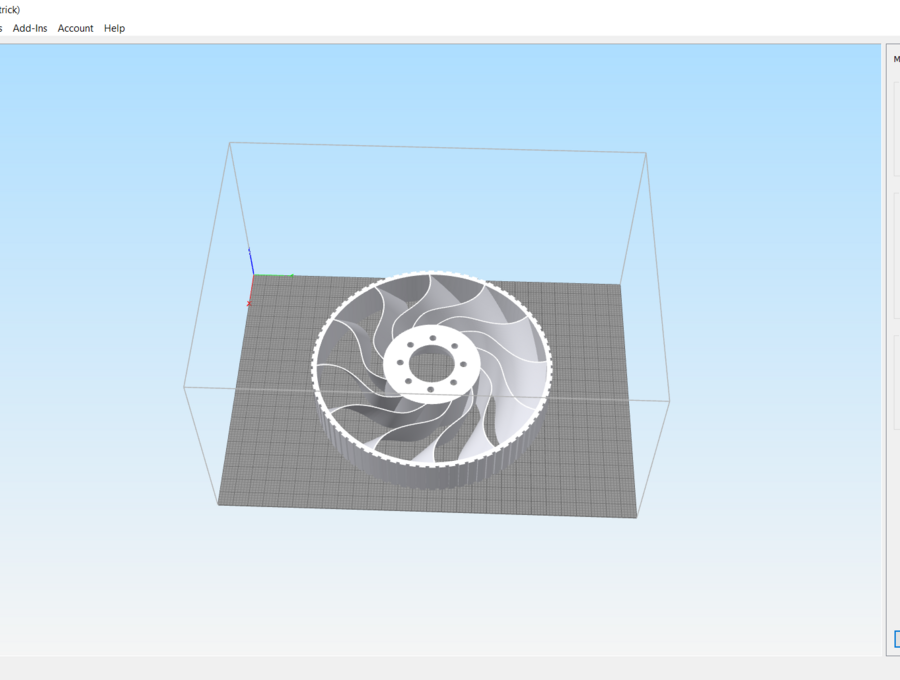
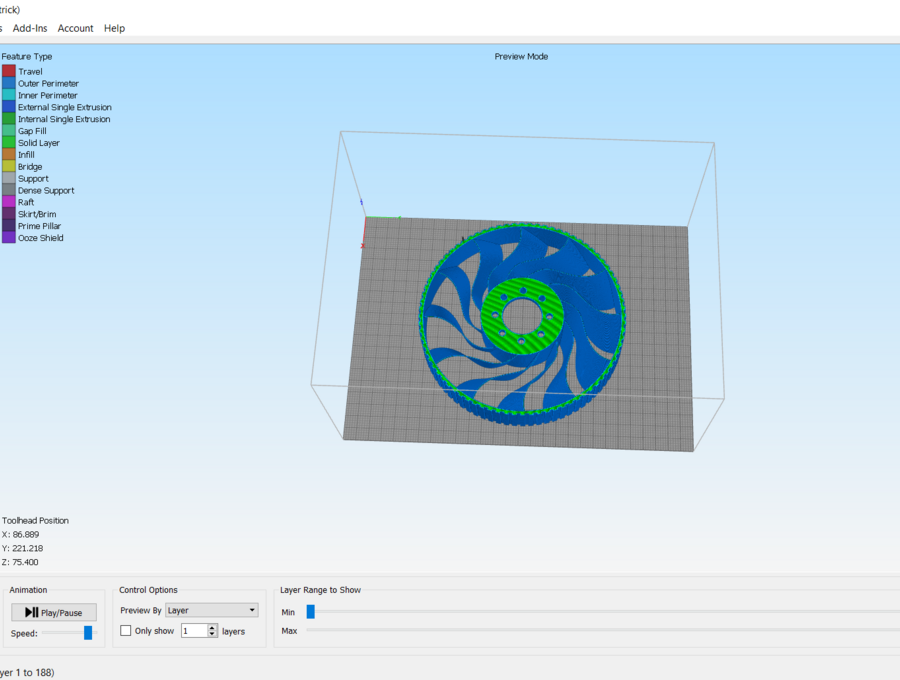
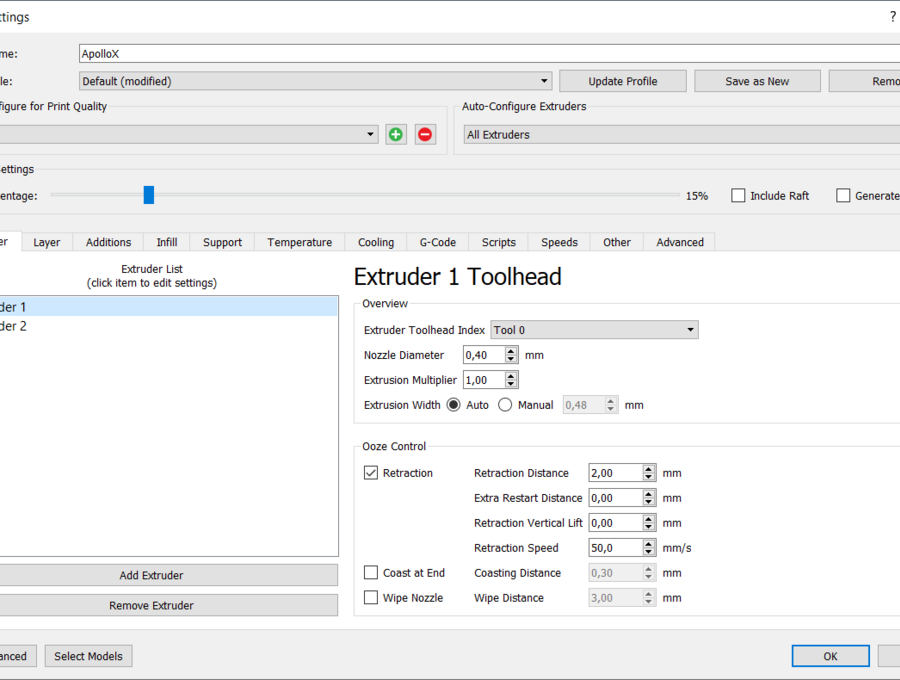
SLICING IN THREE-AXIS PRINTING
HAGE3D uses the software solution from Simplify3D® for slicing software. The software is used for the slicing process of the STL models, allowing them to be saved in a format that is suitable for printing.
The imported STL models are prepared for printing with the aid of the slicing software. The software splits the model into thin layers and saves all information as G-code. The print process then transfers the digital model to a physical model on a layer-by-layer basis. Simplify3D can define divergent material configurations and adapt them with only minimal effort. We use Simplify3D® for most of our system models.
SIMULATING THE 3D MODEL WITH THE SLICING SOFTWARE
Before the operator imports the G-code into the system’s HMI, there is the option to simulate the 3D model. The simulation allows the operator to see whether the selected process parameters are sufficient for the intended use. These include the following parameters:
Number of base layers
Cover layers
Outer shells
Or type and quantity of filling material
Additionally, the simulation offers a better overview of the speeds that the operator has selected. With experience, the operator can assess whether these have been properly adjusted before production starts. The material used and the process parameters selected, as well as the build chamber, print bed and nozzle temperature, all play a role.
INDIVIDUALLY DEFINED SUPPORT STRUCTURES
In additive manufacturing the printing of 3D models from an overhang angle of 45° is difficult. The extruded material no longer has enough of a bearing surface, and support structures become unavoidable. In Simplify3D®, the operator is free to create support structures automatically or on an individual basis. In some cases, it can be beneficial to define support structures adapted to the 3D model. We recommend doing this, particularly if you are working with complex structures. Both the number and size of the individual support columns can be individually defined.
OTHER HELPFUL FEATURES
Additionally, the Simplify3D® software solution has several advanced options.
Creation of multiple processes with differing process parameters in a single manufacturing process
Automatic network analysis including mesh repair
Integration of self-authored G-codes into existing G-codes
etc.
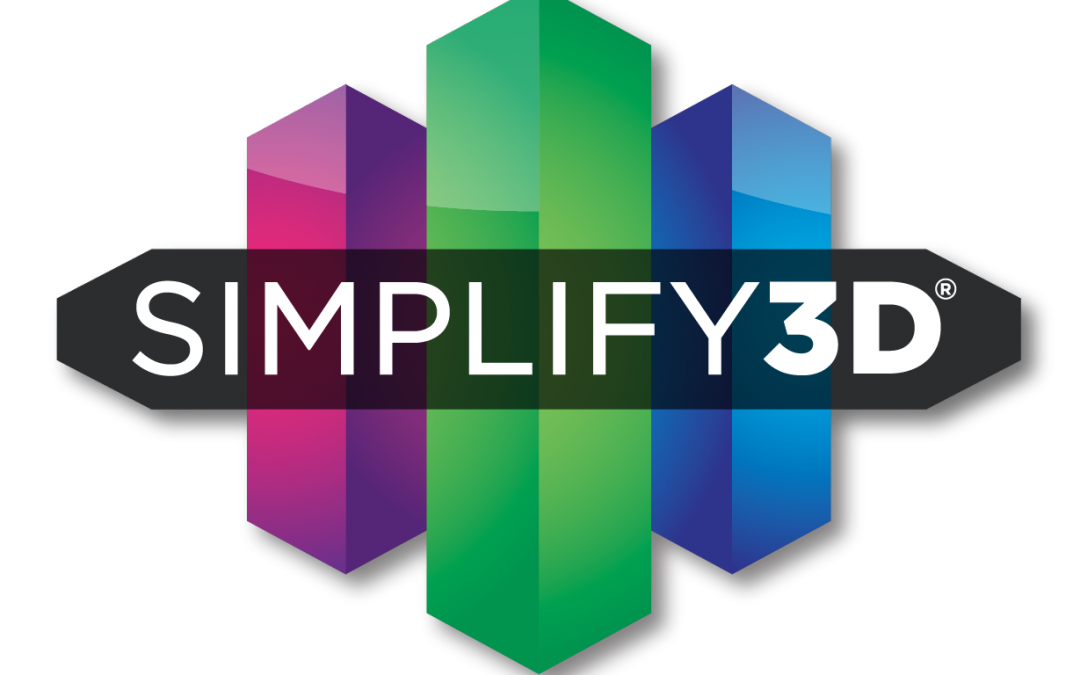
SLICING SOFTWARE IN
FIVE-AXIS PRINTING
NX offers all requisite functions in a single, integrated system – from design to printing to post-printing validation. NX industrialises additive manufacturing so that you can use this innovative new technology to print prototypes as well as new geometries.
Siemens NX Multi Axis Deposition is used on the five-axis model of the HAGE3D 175 Convertible. The software is used to generate a build-up strategy for five-axis motion guidance. Several build-up strategies are available – from flat surfaces to free-form surfaces.
